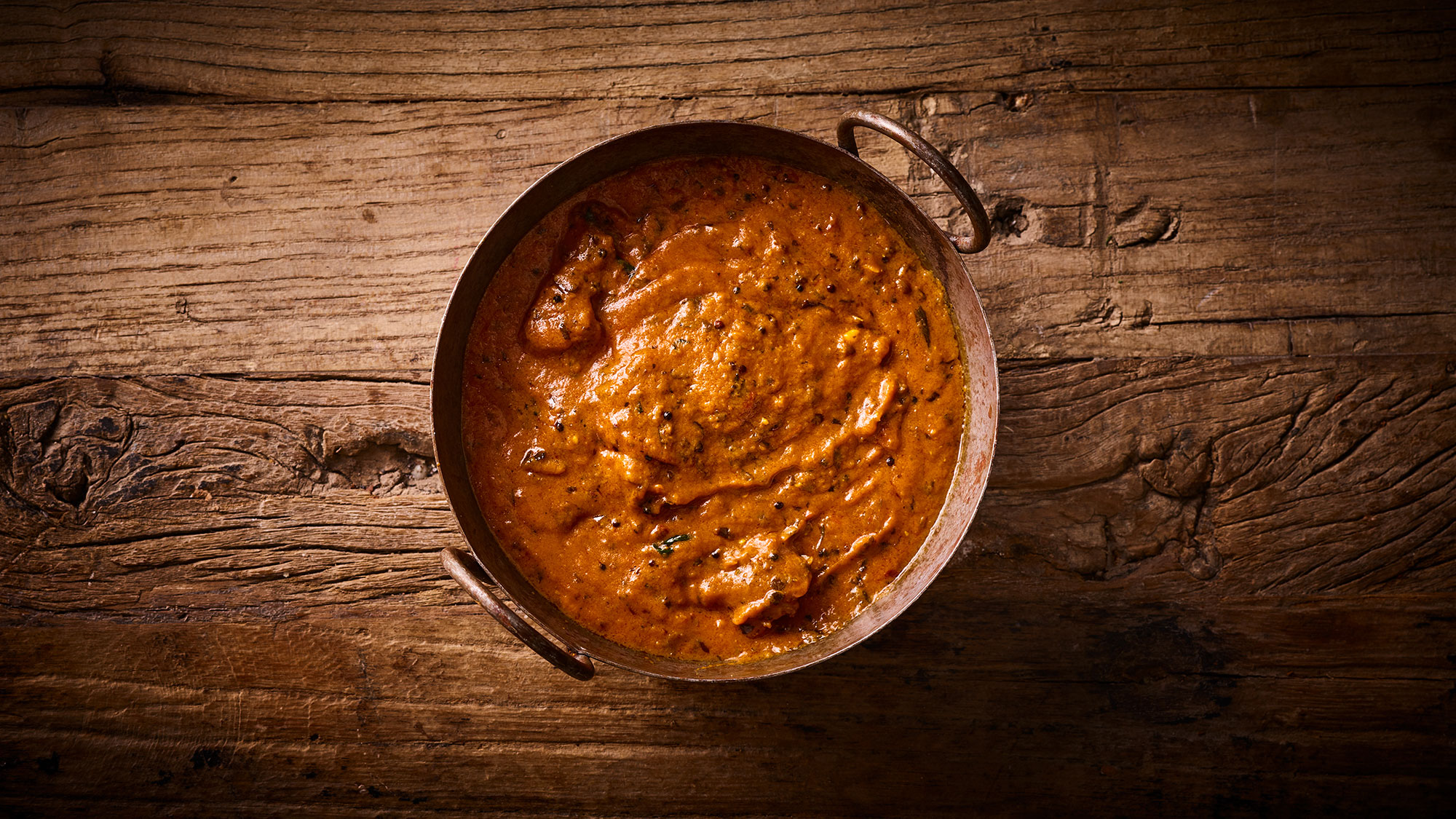
Bindia’s Coconut Tamarind Lamb is a true homemade culinary invention, which you’ll only find at Bindia. The Coconut Tamarind Lamb is an experiment in Indian cooking and a way to fusion North with South. It’s 100% Bindia’s own, but we think everyone should try it.
Attempting to say anything definite about Indian food is nearly an impossible task.In the immense and colorful country of India, there exists as many kitchens and culinary traditions as regions due to India’s great diversity of climates, agriculture, local traditions, and ingredients.
In the mountainous regions to the north at the foothills of the Himalayas where Bindia’s found and head chef, Amer Suleman is from, it’s customary to use a mix of nuts and seeds as a central part of the curry making. This makes the curry sweet and creamy while adding necessary and nurturing calories for the people living in these colder provinces.Examples of true nutty North Indian dishes include our critically acclaimed Butter Chicken and Bindia’s creamy Korma curry.
In Southern India, on the other hand, you’ll often find very spicy curries - like the tomato-based Madras, which is the most spicy thing on Bindia’s menu. In several South Indian states, there are many religious and spiritual communities that don’t eat meat. The most ‘restrictive’ spiritual diet is likely to be found within Jainism. This religion not only prohibits meat, fish, egg, and other animal products, but also root vegetables, which therefore excludes many otherwise common ingredients of the Indian kitchen like turmeric, ginger, garlic, and onion; the latter being a central pillar of the North Indian cuisine.
Even though it’s far from the majority that belongs to this religious minority, their ancient precepts have had a significant influence on many regional kitchens. Therefore, the South Indian kitchen focuses heavily on ingredients like tomato, coconut, tamarind, mustard seeds, mustard leaves, and curry leaves.
”I’m very inspired by the South Indian kitchen and particularly ingredients like coconut and tamarind”, says Amer Suleman. “The taste as well as the nutrition encapsulated in these ingredients is quite exciting for an adventurous chef. The inspiration for the Coconut Tamarind curry was more or less: “I wonder if I can create a nice curry from these two…””
With few simple and delicious ingredients, it’s the coconut and tamarind that are the stars of the show. They put on an exciting display of synergy of taste as the tamarind both has a sweet and sour play going on while the coconut provides a fullness and richness in its plump taste.
On the one side of the Bindia spectrum, you’ll find the mild North Indian Korma and Butter curries, while at the other end, you’ll find the strong South Indian Madras curry. The Coconut Tamarind Lamb is more balanced and centered. It belongs to the same taste universe as the Madras curry but without the same intensity or amount of chili and mustard seeds. It might be conceived of as “South India for beginners” – semi-strong but with sweet Indian notes.
As the Indians don’t eat pork or beef in consideration of the country’s two largest religions Hinduism and Islam, they have instead become specialists in dealing with lamb and therefore have unique traditions and techniques for selecting the best meat and make it as delicious as possible. We therefore have clear guidelines for selecting and preparing our lamb at Bindia.
We only use meat from grazing sheep from New Zealand in our Coconut Tamarind Lamb, as this meat has the best smell and taste and doesn’t contain too much fat. We take measures to select for young, and therefore tender, meat, which we cut ourselves to ensure the final product is consistent with our standards.
We then roast the meat together with a tempering of ginger, carnation, and garlic, among others in a big cauldron. This removes the characteristic smell of lamb and gives the meat warm flavor and that Bindia character. All done according to traditional procedures.
Enjoy!
Try our Coconut Tamarind Lamb at your local Bindia in Østerbro, Nørrebro, Frederiksberg, Amager, Lyngby, and Søborg, or simply order it here.